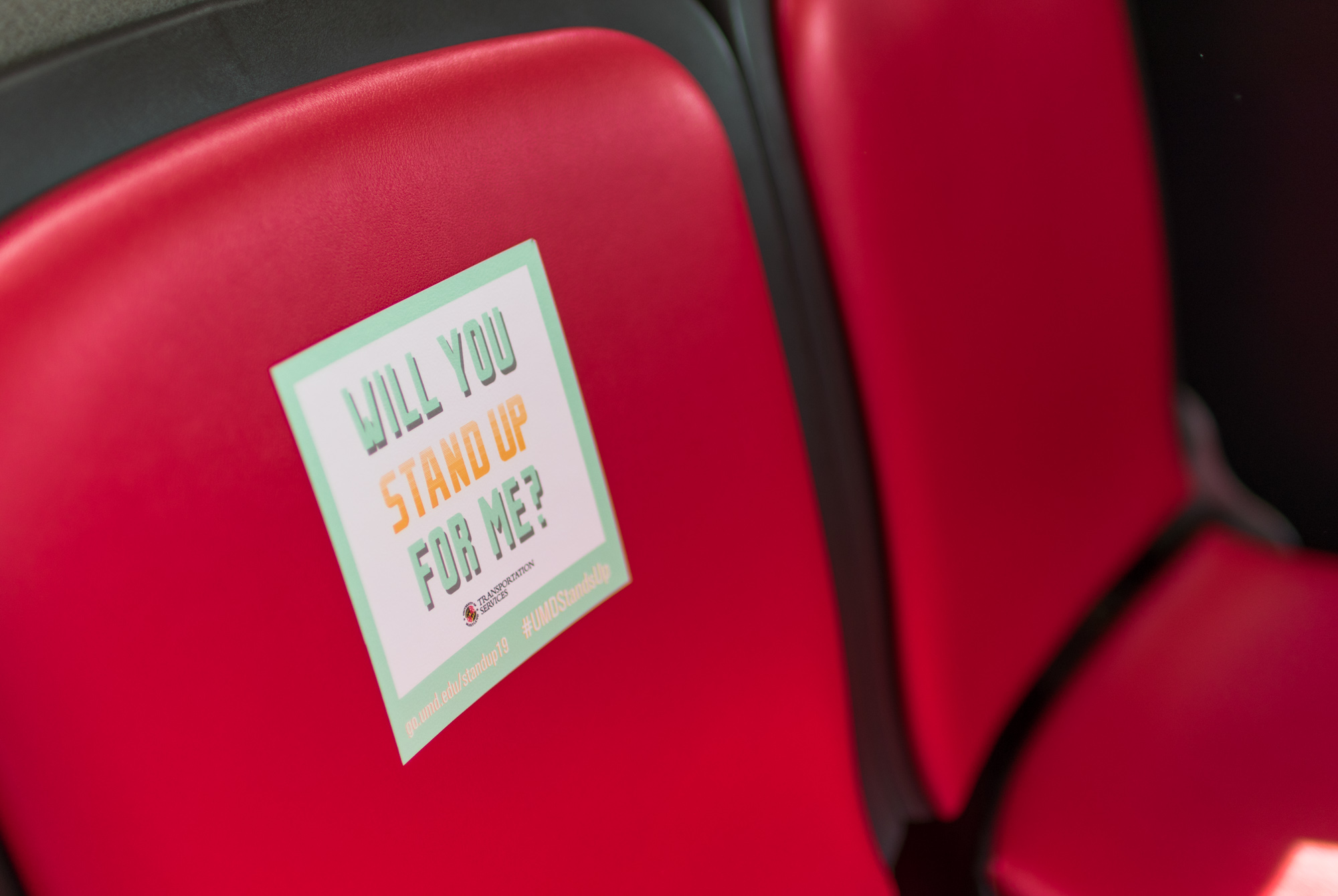For most people, having to stand on a crowded shuttle with no open seats might mean a slightly more uncomfortable commute than usual.
But for University of Maryland doctoral student Cassidy Henry, running into this situation on their trip to campus from Adelphi means enduring 20 minutes of excruciating pain.
“I am literally in searing pain and need to sit down. Even though it’s only a 20 minute ride home at worst, it’s like — that’s 20 minutes too much of standing for me, unfortunately,” said Henry, who studies linguistics.
Henry has multiple sclerosis and fibromyalgia, a disorder that causes widespread aches and pain throughout the body. Since they don’t have any physical markers of having a disability people don’t typically offer up their seats to Henry as they might for someone who uses a wheelchair or another mobility device.
Since the end of last month, Henry’s been working with this university’s Department of Transportation Services to spread awareness for the challenges those with invisible disabilities face, while showing community members how to be allies on public transportation.
Their campaign, “Will You Stand Up for Me?,” aims to both educate able-bodied community members and empower those with such disabilities, DOTS spokesperson Cara Fleck Plewinski said.
Henry has taken to calling for a paratransit bus or spending $20 on an Uber to and from campus, rather than taking the risk of a painful bus ride. But they’re hopeful that the campaign could make change.
“We want to teach riders through this campaign that if someone asks them for their seat, that they should consider offering their seat to that person,” Fleck Plewinski said. “And then kind of by the same token, if you are a person who needs a seat on a shuttle, you should feel comfortable to ask someone for a seat.”
[Read more: Some UMD students find the school’s paratransit system unreliable]
DOTS and Henry kicked off the semester-long campaign in late March, placing signage on shuttles that push the movement’s message and offering free pins to campus community members that indicate their willingness to give up their seats for those with invisible disabilities.
Henry sparked the campaign after taking to Twitter to express their frustration about how difficult it can be to find a seat on public transportation with an invisible disability — which DOTS responded to.
“It would be great if you guys could design, with disabled students’ help, a campaign that not all disabilities are visible,” Henry wrote in a reply back to DOTS. “If someone who needs a seat asks, you should give it to them.”
Senior public health major Courtney Clark hadn’t heard of the phrase “invisible disability.” But she had seen people sit in handicap seats on public transportation, only to move when someone boards with a visible disability, such as one that would require a wheelchair.
[Read more: Many buildings at UMD aren’t accessible. This student made a 43-page report to track them.]
Clark said she appreciates the campaign’s mission of raising awareness for disabilities that aren’t immediately visible, and for encouraging able-bodied people to offer their seats to those who ask for them regardless of whether they can tell that the person has a disability.
“You shouldn’t have to explain yourself to anybody if you know that you have a disability,” she said.
While the campaign is only set to continue through the end of the semester, Henry said they are working with DOTS to see if it can become a more long-term initiative. They stressed its value in educating able-bodied people that not all disabilities are visible.
“Most people don’t want to be jerks to disabled people,” Henry said. “No one wants to be mean and be like, ‘No, I’m not going to move,’ because they don’t know. I’m sure if most people knew, ‘Oh, that person’s disabled,’ they’d happily move if they’re able to.”



